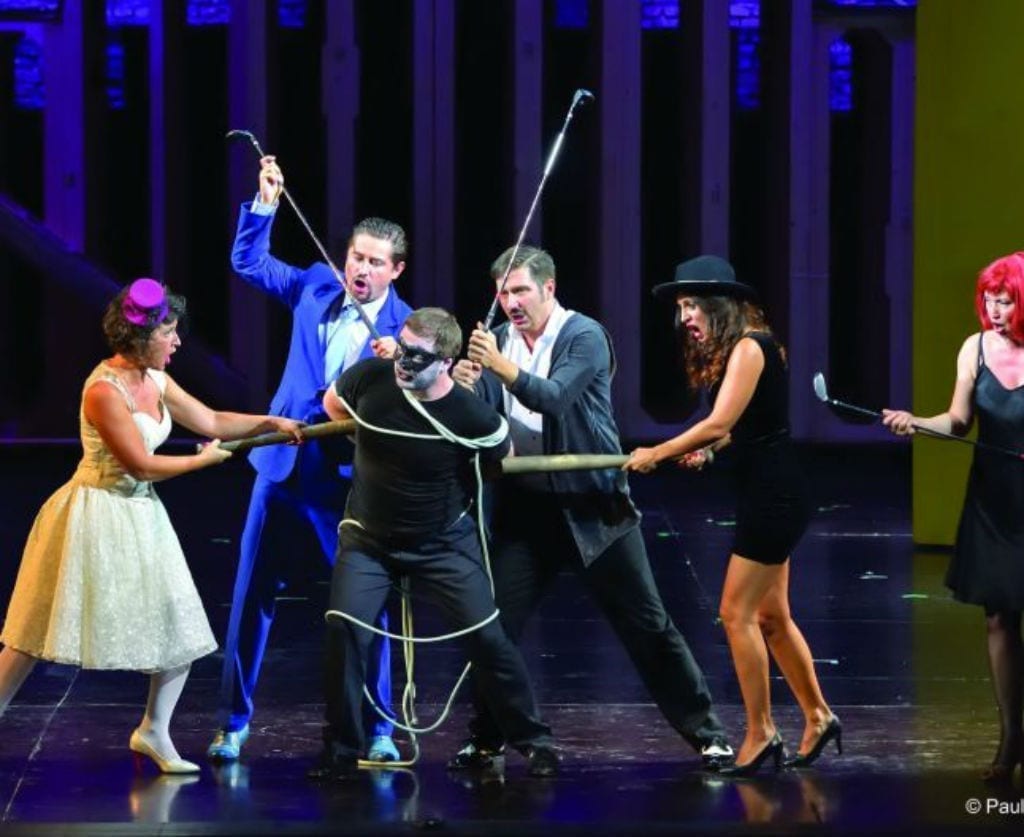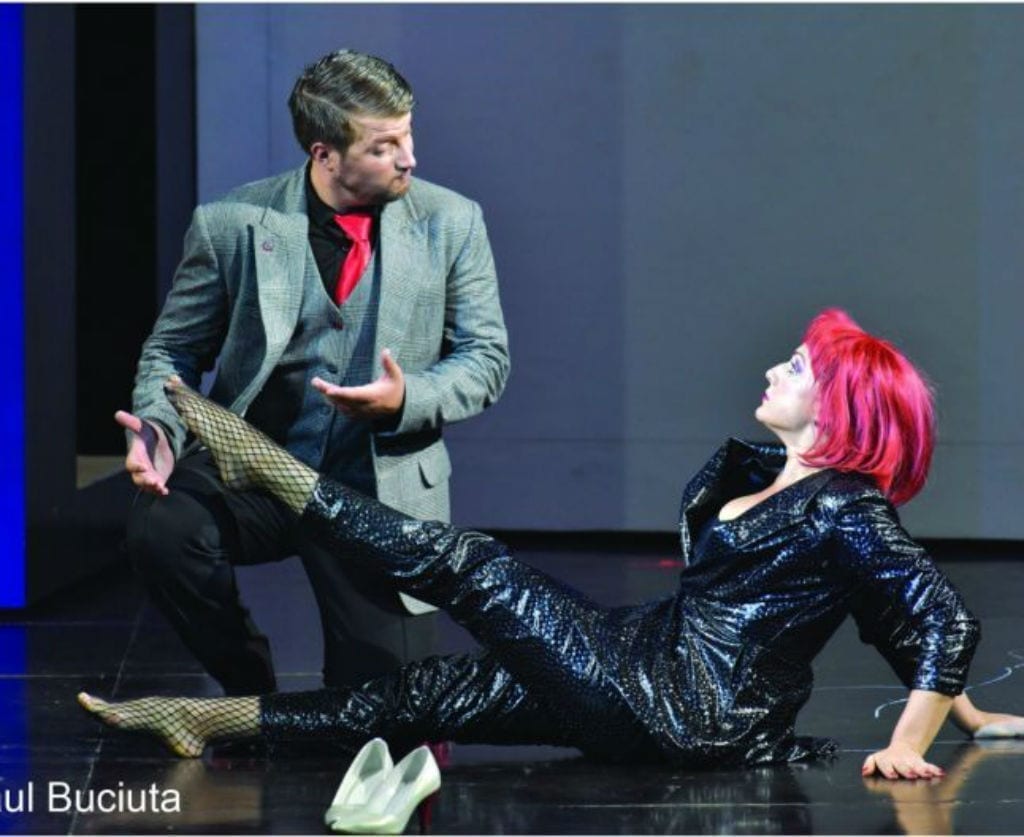Andrei Serban’s new production of Mozart’s Don Giovanni at the Bucharest National Opera House focuses on the theatrical and visual aspect, sometimes impairing the music with excessive and unnecessary effects. It moves the action to a modern world where sex, violence and drugs dominate.
In this production, Don Giovanni is still obsessed with women, but with conquering them rather than possessing them physically, while all the women become obsessed with him and his sexuality. He is probably a high-level drug dealer of a certain social status, but he is not a criminal and killing the Commendatore in self-defence haunts him permanently.
Donna Anna is a fashionable woman of some status fully aware of her sexuality, in a dysfunctional and social-only relationship with Don Ottavio [official/policeman/coroner] and in a hot relationship with Don Giovanni. She is gradually shocked to see that she is not the only object of his attention and asks for revenge less for her father than for her “betrayal”.
Il Commendatore (Donna Anna’s father) is seen as an older version of Don Giovanni; he walks by with two female escorts to shockingly find his own daughter having sex in the street with Don Giovanni; he tries to kill the latter, but gets shot in the process. Don Ottavio is called to investigate the murder and in public both he and Donna Anna pretend to be very affected.
Donna Elvira is seen as a hysterical middle-aged slut, obsessed with the inaccessible Don Giovanni, and who vengefully exposes his actions.
Zerlina is by no means an “innocent girl”; she is keen to get social status and good sex, and she also becomes obsessed with Don Giovanni. Having accepted she cannot have him, she reluctantly returns to Masetto.
Don Ottavio makes public statements while ranting his arias, so gone is all the lyricism and emotion. He forces Donna Anna into a resentful and probably badly ending marriage.
Leporello is conceived as a shadow following his master, emulating him, but unable to rise to his level. His identity is blurred, he constantly wears white paint on his face, like a clown, and he turns into a tragicomic one, taking all the beating and left only with his worthless memories.
The sets are minimal – a few mobile modules with straight coloured walls and holes for doors and windows, revealing a staircase where the characters sing at various levels. The cemetery is a collection of crosses spread across a few steps around the Commendatore’s tombstone; it remains in place to the end.
The costumes are modern and varied, some hinting at fetishes, often leaving various body parts bare. The stage direction is very dynamic and many extras fill the stage. In the end, standing for society, they close in to condemn him. The only woman the don cannot get, and with whom he is obsessed, is Elvira’s maid, who shoots him in the end after being raped at his final party. At the end, Don Giovanni is reunited with the Commendatore at the same table in an unearthly world – two sides of the same eternal character. All the performers move and act with involvement and dedication.
Musically we hear the classical combination of the Prague & Vienna versions. The musical rendition has rhythm and dynamics but lacks insight and depth. At times it suffers from the director’s additions – shouts, howls, growls, spoken or whispered text, etc.
There are two casts, neither really bad but neither really perfect, but each cast creates a different atmosphere and energy.
Four public dress rehearsals and two performances have taken place. Two other performances are following in October.


